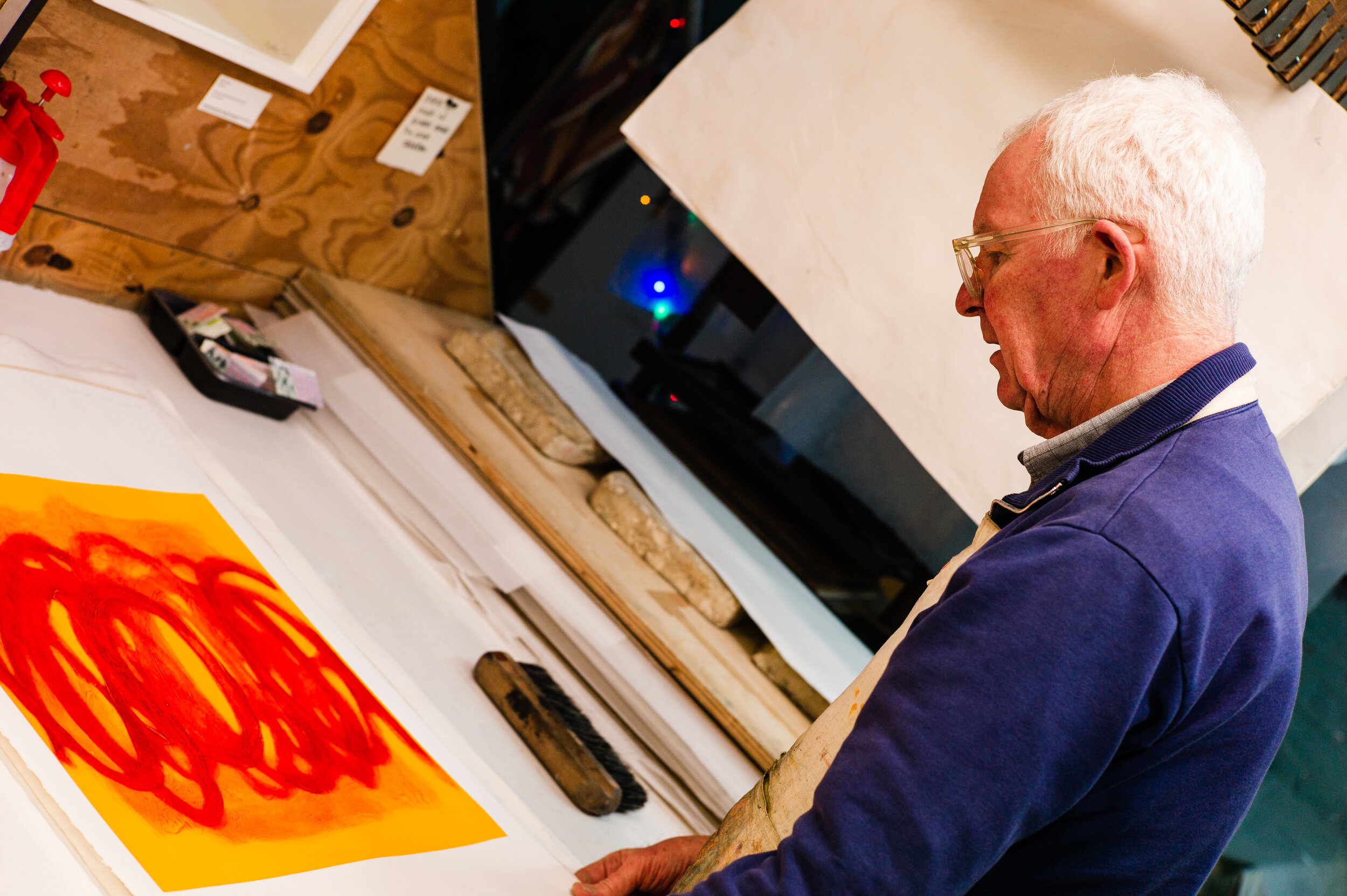
FEATURE
Hard ground
A traditional technique in etching. After degreasing the surface of the plate, hard ground is rolled over the surface.
TECHNIQUE
Hard ground
A traditional technique in etching. After degreasing the surface of the plate, hard ground is rolled over the surface.

Hard ground is made of a mixture of asphaltum, resin and beeswax and is resistant to acid. The ground is softened and spread in a thin layer onto copper, zinc or steel sitting on top of a ‘hot plate’. Once even, the ground is made hard by smoking. The carbon from the smoke also darkens the ground so it is easier to see when drawing.
An etching ‘needle’ is traditionally used to draw into hard ground, revealing a fine thin line, but other ways to make marks include abrading or scratching with non-traditional tools like drill bits or wire wool. Hard ground can also be wiped away or painted with different solvents for more organic shapes.
When the plate is submerged in acid the plate will ‘bite’ in any revealed areas, creating indentations in the metal plate. The longer the plate is in the acid, the deeper the lines and marks will be etched.
After being in the acid the hard ground is cleaned off the plate. The plate is inked intaglio – in the lines, grooves or open areas bitten by the acid.
More printmaking techniques
Carborundum
Abrasive carborundum grit (silicon carbide) is mixed with acrylic medium or glue and painted onto a flat surface, such as plastic or metal.
Lithography
An image is painted, drawn or stencilled onto a slab of limestone or a metal plate (often aluminium) with oily materials, including greasy crayons and pencils, special ink called tusche, and photochemical transfers.
More Features
All featuresOn Siss / Phuss: Ziqi Xu in conversation with Livia Wang
“It’s all because I want to see myself, I want to see those unnoticed moments, how they pass by, what is really happening. So that makes the work very personal.”
“I think all visual art is a metaphor”
Following a previous career as a forensic psychiatrist, James Anderson’s colourful carborundum and layered woodcuts convey the emotion of inner worlds. We discuss abstraction, inspiration and the hard work of practice with him.
Incredibly dark and incredibly light
“When I’m sitting in a ballet rehearsal I don’t have access to a table or any printing things so I have to make the monoprints from sketches when I get home. There’s a lot of bodies, there’s a lot of faces, a lot of movement.”






